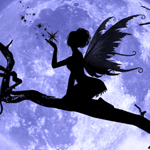Do fairies exist? Not on the Internet
Do fairies reside at the bottom of your garden? Or live inside the thick trunks of mystical trees found within enchanted forests?
The existence of fairies plays an important role in folklore and plays a significant part in many different cultures, communities and even religions, and their presence, depending on who you speak to, can mean many different things. And because of their popularity there are a large number of social media and Internet hoaxes purporting to prove the existence of these mythical beings.
In fact, fairy related hoaxes have long predated the Internet. The Cottingley Fairies hoax fooled millions when photographs purportedly depicting fairies were published in 1917 by two young girls, and is widely regarded as one of the most famous hoaxes of all time.
So convincing at the time were the photos they circulated for decades and even fooled Sherlock Holmes author Sir Arthur Conan Doyle before being dismissed as actually being cardboard cut-outs.
With improved technology and the advent of software programs like Photoshop such hoaxes can be harder to debunk. In 2006 Takeshi Yamada created a fake photo dubbed “Fairy Fossils” which promptly circulated social media purporting to be a genuine fossil of a fairy, fooling many Internet users.
Perhaps the most famous modern day Internet-era fairy ruse is the “Derbyshire Fairy Hoax” that started in 2007. This popular hoax, that persistently resurfaces on social networking sites such as Facebook, purports to show the mummified remains of a fairy discovered in Derbyshire by a dog walker.
However it was soon revealed to be nothing more than an Aprils Fools Prank by prop-maker Dan Baines, who even put the “remains” on sale at EBay. Even after revealing it to be nothing more than a hoax the image still resurfaces on the Internet to this day. The photo is considered to be one of the most popular Internet hoaxes of all time.
In fact the photographed “remains” appeared so genuine that many believers assert Dan Baines actually captured a genuine fairy and the real hoax is the cover-up aimed at making people believe that the image is fake. Baines reported to the BBC that he still gets people contacting him demanding he return the remains to its grave!
Whether or not the subject matter of this article exists is one thing, but one thing we do know is that hoaxes surrounding the mythical fairy often become very popular, perhaps largely down to a human’s natural curiosity surrounding the unknown, and how we’re captivated with the idea of living amongst paranormal beings.
Whether fairies really exist or not is outside the scope of this site and is certainly not for us to say. But as far as online evidence shows us, there is nothing on the Internet – at least from what we have seen – that shows fairies to be real. Perhaps there never will be irrefutable evidence that they exist, just a continuation of the elusive relationship between science and the supernatural, and belief in their existence may only ever be demonstrated by faith and faith alone.
”…faith is the substance of things hoped for, the evidence of things not seen”
Continued below...
Thanks for reading, we hope this article helped, but before you leave us for greener pastures, please help us out.
We're hoping to be totally ad-free by 2025 - after all, no one likes online adverts, and all they do is get in the way and slow everything down. But of course we still have fees and costs to pay, so please, please consider becoming a Facebook supporter! It costs only 0.99p (~$1.30) a month (you can stop at any time) and ensures we can still keep posting Cybersecurity themed content to help keep our communities safe and scam-free. You can subscribe here
Remember, we're active on social media - so follow us on Facebook, Bluesky, Instagram and X


